
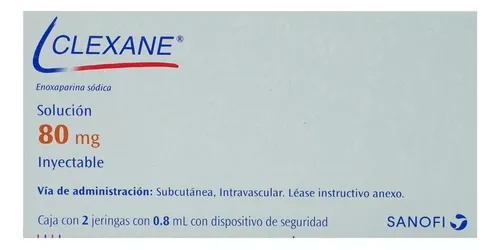
КЛЕКСАН 8 000 МЕ (80 мг)/0,8 мл РАСТВОР ДЛЯ ИНЪЕКЦИЙ В ПРЕДНАПОЛНЕННОМ ШПРИЦЕ

Спросите врача о рецепте на КЛЕКСАН 8 000 МЕ (80 мг)/0,8 мл РАСТВОР ДЛЯ ИНЪЕКЦИЙ В ПРЕДНАПОЛНЕННОМ ШПРИЦЕ

Инструкция по применению КЛЕКСАН 8 000 МЕ (80 мг)/0,8 мл РАСТВОР ДЛЯ ИНЪЕКЦИЙ В ПРЕДНАПОЛНЕННОМ ШПРИЦЕ
Введение
Инструкция: информация для пользователя
КЛЕКСАН 8 000 МЕ (80 мг)/0,8 мл раствор для инъекций в предварительно заполненном шприце
еноксапарин натрия
Прочитайте внимательно всю инструкцию перед началом использования этого лекарства, поскольку она содержит важную информацию для вас.
- Сохраните эту инструкцию, поскольку вам может потребоваться снова прочитать ее.
- Если у вас есть какие-либо вопросы, проконсультируйтесь с вашим врачом, фармацевтом или медсестрой.
- Это лекарство было назначено только вам, и не передавайте его другим людям, даже если они имеют те же симптомы, что и вы, поскольку оно может нанести им вред.
- Если вы испытываете побочные эффекты, проконсультируйтесь с вашим врачом или фармацевтом, даже если это побочные эффекты, которые не указаны в этой инструкции. См. раздел 4.
Содержание инструкции
- Что такое Клексан и для чего он используется
- Что вам нужно знать перед началом использования Клексана
- Как использовать Клексан
- Возможные побочные эффекты
- Хранение Клексана
- Содержание упаковки и дополнительная информация
1. Что такое Клексан и для чего он используется
Клексан содержит активное вещество под названием эноксапарин натрия. Он принадлежит к группе лекарств, называемой "гепарин с низкой молекулярной массой" или ГНММ.
Как действует Клексан
Клексан действует двумя способами:
- Предотвращая рост существующих тромбов. Это помогает вашему организму разрушить их и предотвратить дальнейший вред.
- Прерывая образование новых тромбов в крови.
Для чего используется Клексан
Клексан можно использовать для:
- Лечения тромбов в крови
- Предотвращения образования тромбов в крови в следующих ситуациях:
- до и после хирургической операции
- когда у вас есть кратковременное заболевание и вы не можете двигаться в течение некоторого времени
- если у вас был тромб в крови из-за рака, для предотвращения образования новых тромбов.
- Для предотвращения образования тромбов в крови при нестабильной стенокардии (заболевании, при котором к сердцу не поступает достаточное количество крови) или после инфаркта миокарда
- Предотвращения образования тромбов в крови в трубках аппарата для диализа (который используется у людей с тяжелыми проблемами почек).
2. Что вам нужно знать перед началом использования Клексана
Не используйте Клексан, если:
- вы аллергичны к:
- еноксапарину натрия или любому другому компоненту этого лекарства (перечисленному в разделе 6)
- гепарину или другим гепаринам с низкой молекулярной массой, таким как надропарин, тинзапарин или далтепарин.
Признаки аллергической реакции включают: сыпь, проблемы с дыханием или глотанием, отек лица, губ, языка, полости рта, горла или глаз.
- у вас была реакция на гепарин, которая привела к значительному снижению количества тромбоцитов в крови в течение последних 100 дней
- у вас есть антитела к эноксапарину в крови
- вы испытываете сильное кровотечение или имеете заболевания с высоким риском кровотечения, такие как:
- язва желудка, недавняя операция на мозге или глазах, или церебральное кровотечение.
- вы используете Клексан для лечения тромбов в крови и в течение 24 часов:
- будете проходить люмбальную или спинальную пункцию
- будете проходить операцию под спинальной или эпидуральной анестезией.
Не используйте Клексан, если у вас есть какие-либо из этих условий. Если вы не уверены, проконсультируйтесь с вашим врачом или фармацевтом перед использованием Клексана.
Предостережения и меры предосторожности
Не следует заменять Клексан другими "гепаринами с низкой молекулярной массой", такими как надропарин, тинзапарин или далтепарин. Это связано с тем, что они не идентичны и не имеют одинаковой активности или инструкций по применению.
Проконсультируйтесь с вашим врачом или фармацевтом перед началом использования Клексана, если:
- у вас когда-либо была реакция на гепарин, которая привела к значительному снижению количества тромбоцитов в крови
- у вас установлен кардиальный клапан
- у вас есть эндокардит (инфекция внутреннего слоя сердца)
- у вас есть история язвы желудка
- у вас недавно было церебральное кровотечение
- у вас высокое кровяное давление
- у вас диабет или проблемы с кровеносными сосудами глаз, вызванные диабетом (называемые диабетической ретинопатией)
- у вас недавно была операция на глазах или мозге
- вы пожилой человек (старше 65 лет) и особенно если вам больше 75 лет
- у вас проблемы с почками
- у вас проблемы с печенью
- у вас очень низкий вес или вы страдаете ожирением
- у вас высокий уровень калия в крови (что может быть обнаружено с помощью анализа крови)
- вы сейчас используете лекарства, которые влияют на кровотечение (см. раздел 2, "Использование Клексана с другими лекарствами")
- у вас есть какие-либо проблемы с позвоночником или вы прошли спинальную операцию.
Если у вас есть какие-либо из этих условий (или вы не уверены), проконсультируйтесь с вашим врачом или фармацевтом перед использованием Клексана.
Для пациентов, получающих дозы выше 210 мг/день, это лекарство содержит более 24 мг натрия (основного компонента столовой соли/для приготовления пищи) в каждой дозе. Это эквивалентно 1,2% от максимально допустимой суточной нормы потребления натрия для взрослого человека.
Анализы и контроль
Вам может потребоваться сдать анализ крови перед началом использования этого лекарства и во время его использования; это необходимо для проверки уровня тромбоцитов и уровня калия в крови.
Дети и подростки
Эффективность и безопасность Клексана не были оценены у детей или подростков.
Использование Клексана с другими лекарствами
Сообщите вашему врачу или фармацевту, если вы используете, недавно использовали или можете использовать любое другое лекарство.
- варфарин - используется для снижения свертываемости крови
- аспирин (также известный как ацетилсалициловая кислота или АСК), клопидогрел или другие лекарства, используемые для предотвращения образования тромбов в крови (см. раздел 3, "Смена антикоагулянтного лекарства")
- инъекция декстрана - используется как заменитель крови
- ибупрофен, диклофенак, кеторолак и другие лекарства, известные как нестероидные противовоспалительные препараты, используемые для лечения боли и воспаления при артрите и других заболеваниях
- преднизолон, дексаметазон и другие лекарства, используемые для лечения астмы, ревматоидного артрита и других заболеваний
- лекарства, которые увеличивают уровень калия в крови, такие как препараты калия, диуретики и некоторые лекарства для лечения сердечных заболеваний.
Хирургические операции и анестезия
В случае, если вам будут проводить люмбальную или спинальную пункцию, или вы будете проходить хирургическую операцию, при которой будет использоваться спинальная или эпидуральная анестезия, сообщите вашему врачу, что вы используете Клексан.
Беременность и лактация
Если вы беременны, думаете, что можете быть беременной или планируете стать беременной, проконсультируйтесь с вашим врачом или фармацевтом перед использованием этого лекарства.
Если вы беременны и у вас установлен механический кардиальный клапан, у вас может быть более высокий риск образования тромбов в крови. Ваш врач обсудит это с вами.
Если вы кормите грудью или планируете кормить грудью, вы должны проконсультироваться с вашим врачом перед использованием этого лекарства.
Вождение и использование машин
Клексан не влияет на способность водить транспортные средства и использовать машины.
Рекомендуется, чтобы медицинский работник записал название торговой марки и номер партии продукта, который вы используете.
3. Как использовать Клексан
Следуйте точно инструкциям по применению этого препарата, указанным вашим врачом или фармацевтом. В случае сомнений проконсультируйтесь с вашим врачом или фармацевтом.
Применение препарата
- Обычно ваш врач или медсестра введут Клексан. Это связано с тем, что его необходимо вводить путем инъекции.
- Клексан обычно вводится путем инъекции под кожу (подкожно).
- Клексан можно вводить путем инъекции в вены (внутривенно) после определенных видов сердечных приступов или хирургических операций.
- Клексан можно добавить в трубку, выходящую из тела (артериальную линию), в начале сеанса диализа.
- Не вводите Клексан в мышцу (внутримышечно).
Какая доза будет введена
- Ваш врач решит, какая доза Клексана будет введена. Доза будет зависеть от причины, по которой он будет использоваться.
- Если у вас есть проблемы с почками, вам может быть введена меньшая доза Клексана.
- Лечение тромбоза крови
- Обычная доза составляет 150 МЕ (1,5 мг) на килограмм веса тела один раз в день или 100 МЕ (1 мг) на килограмм веса тела дважды в день.
- Ваш врач решит, как долго вы будете получать Клексан.
- Профилактика тромбоза крови во время хирургических операций или периодов ограниченной подвижности из-за болезни
- Доза будет зависеть от вероятности того, что у вас образуется тромб. Вам будет введено 2000 МЕ (20 мг) или 4000 МЕ (40 мг) Клексана в день.
- Если вам предстоит операция, обычно первая инъекция будет введена за 2 или 12 часов до операции.
- Если у вас ограниченная подвижность из-за болезни, обычно вам будет введено 4000 МЕ (40 мг) Клексана в день.
- Ваш врач решит, как долго вы будете получать Клексан.
- Профилактика тромбоза крови при нестабильной стенокардии или после сердечного приступа
- Клексан можно использовать при двух типах сердечных приступов.
- Доза Клексана, которая будет введена, будет зависеть от вашего возраста и типа сердечного приступа, который у вас произошел.
Сердечный приступ типа ИМСЭСТ (инфаркт миокарда с элевацией сегмента ST):
- Обычная доза составляет 100 МЕ (1 мг) на килограмм веса тела каждые 12 часов.
- Обычно ваш врач скажет вам также принимать аспирин (ацетилсалициловую кислоту).
- Ваш врач решит, как долго вы будете получать Клексан.
Сердечный приступ типа ИМСЭСТ, если вам меньше 75 лет:
- Вам будет введена первоначальная внутривенная инъекция 3000 МЕ (30 мг) Клексана.
- Одновременно с этим вам будет введена инъекция Клексана под кожу (подкожная инъекция). Обычная доза составляет 100 МЕ (1 мг) на килограмм веса тела каждые 12 часов.
- Обычно ваш врач скажет вам также принимать аспирин (ацетилсалициловую кислоту).
- Ваш врач решит, как долго вы будете получать Клексан.
Сердечный приступ типа ИМСЭСТ, если вам 75 лет или больше:
- Обычная доза составляет 75 МЕ (0,75 мг) на килограмм веса тела каждые 12 часов.
- Максимальная доза Клексана, вводимая в первые две инъекции, составляет 7500 МЕ (75 мг).
- Ваш врач решит, как долго вы будете получать Клексан.
Для пациентов, подвергающихся коронарному перкутанному вмешательству (КПВ):
- В зависимости от того, когда вам была введена последняя инъекция Клексана, ваш врач может решить ввести дополнительную дозу Клексана перед КПВ. Это будет внутривенная инъекция.
- Профилактика тромбоза крови в трубках аппарата диализа
- Обычная доза составляет 100 МЕ (1 мг) на килограмм веса тела.
- Клексан добавляется в трубку, выходящую из тела (артериальную линию), в начале сеанса диализа. Эта доза обычно достаточна для сеанса продолжительностью 4 часа. Однако ваш врач может решить ввести дополнительную инъекцию 50 МЕ до 100 МЕ (0,5 до 1 мг) на килограмм веса тела, если это необходимо.
Если вы будете вводить себе Клексан самостоятельно
Если вы можете вводить себе Клексан самостоятельно, ваш врач или медсестра покажут вам, как это делать. Не пытайтесь вводить себе Клексан, если вам не показали, как это делать. Если вы не уверены, что делать, немедленно проконсультируйтесь с вашим врачом или медсестрой. Если инъекция выполняется под кожу правильно (так называемая "подкожная инъекция"), это поможет уменьшить боль и гематому в месте инъекции.
Перед тем, как вы введете себе Клексан
- Подготовьте все, что вам понадобится: шприц, кусок ваты с алкоголем или мылом и водой, и контейнер для острых предметов.
- Проверьте срок годности препарата. Если он истек, не используйте его.
- Проверьте, что шприц не поврежден и что раствор препарата прозрачный. Если это не так, используйте другой шприц.
- Убедитесь, что вы знаете, какую дозу необходимо ввести.
- Осмотрите область живота, чтобы увидеть, не вызвала ли последняя инъекция покраснение, изменение цвета кожи, отек, гноение или боль, которая все еще сохраняется. Если это произошло, проконсультируйтесь с вашим врачом или медсестрой.
Инструкции для введения себе Клексана:
(Инструкции для шприцев без устройства безопасности)
Подготовка места инъекции
- Выберите область на правой или левой стороне живота. Не менее 5 см от пупка и в сторону любого из двух боков.
- Не вводите в область 5 см вокруг пупка или вокруг него, если есть шрамы или гематомы.
- Для введения необходимо чередовать левую и правую стороны живота, в зависимости от того, где была сделана последняя инъекция.
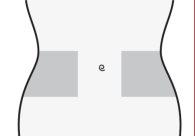
- Вымойте руки. Очистите (не трите) область, в которой будет выполнена инъекция, куском ваты с алкоголем или мылом и водой.
- Сядьте или лягте в удобное положение, чтобы вы были расслаблены. Убедитесь, что вы можете видеть область, в которой будет выполнена инъекция. Лучше всего на диване, кресле-качалке или в кровати с подушками.
Выбор дозы
- Аккуратно снимите колпачок с иглы шприца, потянув за него. Утилизируйте колпачок.
- Перед тем, как ввести себе Клексан, не нажимайте на поршень, чтобы удалить воздух. Это может привести к потере препарата.
- Как только вы снимете колпачок, не трогайте ничего иглой. Таким образом вы обеспечите, что игла останется чистой (стерильной).

- Когда количество препарата в шприце соответствует назначенной дозе, нет необходимости корректировать дозу. Теперь вы готовы к введению инъекции.
- Когда доза зависит от веса тела, вам может потребоваться корректировать дозу в шприце, чтобы она соответствовала назначенной дозе. В этом случае вы можете удалить излишки препарата, держа шприц вниз (чтобы сохранить пузырек воздуха в шприце) и выдавив излишки в контейнер.
- Может появиться капля на конце иглы. Если это происходит, необходимо удалить каплю, осторожно постукивая по шприцу с иглой, направленной вниз. Теперь вы готовы к введению инъекции.
Введение инъекции
- Держите шприц рукой, которой вы пишете (как если бы это был карандаш). Другой рукой осторожно сожмите область, которую вы очистили на животе, между указательным пальцем и большим пальцем, чтобы образовать складку на коже.
- Убедитесь, что вы держите эту складку кожи во время инъекции.
- Держите шприц так, чтобы игла была направлена прямо вниз (вертикально под углом 90 градусов). Введите всю иглу в складку кожи.
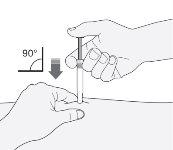
- Нажмите на поршень большим пальцем. Таким образом вы введете препарат в жировую ткань живота. Завершите инъекцию, используя весь препарат в шприце.
- Удалите иглу из места инъекции, потянув ее прямо. Направьте иглу от себя и других людей. Теперь вы можете отпустить складку кожи.
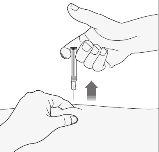
После завершения
- Чтобы избежать появления гематомы, не трите область инъекции после введения.
- Поместите использованный шприц в контейнер для острых предметов. Закройте плотно крышку контейнера и положите контейнер в недоступное для детей место. Когда контейнер будет полным, утилизируйте его так, как указал ваш врач или фармацевт.
Утилизация неиспользованного препарата и всех материалов, которые были в контакте с ним, будет осуществляться в соответствии с местными правилами.
Инструкции для шприцев с автоматическим устройством безопасности типа ERIS TM:
Подготовка места инъекции
- Выберите область на правой или левой стороне живота. Не менее 5 см от пупка и в сторону любого из двух боков.
- Не вводите в область 5 см вокруг пупка или вокруг него, если есть шрамы или гематомы.
- Для введения необходимо чередовать левую и правую стороны живота, в зависимости от того, где была сделана последняя инъекция.
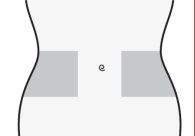
- Вымойте руки. Очистите (не трите) область, в которой будет выполнена инъекция, куском ваты с алкоголем или мылом и водой.
- Сядьте или лягте в удобное положение, чтобы вы были расслаблены. Убедитесь, что вы можете видеть область, в которой будет выполнена инъекция. Лучше всего на диване, кресле-качалке или в кровати с подушками.
Выбор дозы
- Аккуратно снимите колпачок с иглы шприца, потянув за него. Утилизируйте колпачок.
- Перед тем, как ввести себе Клексан, не нажимайте на поршень, чтобы удалить воздух. Это может привести к потере препарата.
- Как только вы снимете колпачок, не трогайте ничего иглой. Таким образом вы обеспечите, что игла останется чистой (стерильной).

- Когда количество препарата в шприце соответствует назначенной дозе, нет необходимости корректировать дозу. Теперь вы готовы к введению инъекции.
- Когда доза зависит от веса тела, вам может потребоваться корректировать дозу в шприце, чтобы она соответствовала назначенной дозе. В этом случае вы можете удалить излишки препарата, держа шприц вниз (чтобы сохранить пузырек воздуха в шприце) и выдавив излишки в контейнер.
- Может появиться капля на конце иглы. Если это происходит, необходимо удалить каплю, осторожно постукивая по шприцу с иглой, направленной вниз. Теперь вы готовы к введению инъекции.
Введение инъекции
- Держите шприц рукой, которой вы пишете (как если бы это был карандаш). Другой рукой осторожно сожмите область, которую вы очистили на животе, между указательным пальцем и большим пальцем, чтобы образовать складку на коже.
- Убедитесь, что вы держите эту складку кожи во время инъекции.
- Держите шприц так, чтобы игла была направлена прямо вниз (вертикально под углом 90 градусов). Введите всю иглу в складку кожи.
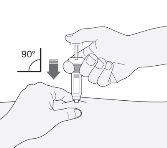
- Нажмите на поршень большим пальцем. Таким образом вы введете препарат в жировую ткань живота. Завершите инъекцию, используя весь препарат в шприце.
- Удалите иглу из места инъекции, потянув ее прямо. Защитный чехол автоматически покроет иглу. Теперь вы можете отпустить складку кожи. Устройство безопасности освободит защитный чехол только тогда, когда шприц будет опорожнен и поршень будет нажат глубоко.
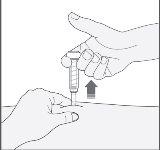
После завершения
- Чтобы избежать появления гематомы, не трите область инъекции после введения.
- Поместите использованный шприц в контейнер для острых предметов. Закройте плотно крышку контейнера и положите контейнер в недоступное для детей место. Когда контейнер будет полным, утилизируйте его так, как указал ваш врач или фармацевт.
Утилизация неиспользованного препарата и всех материалов, которые были в контакте с ним, будет осуществляться в соответствии с местными правилами.
Инструкции для шприцев с автоматическим устройством безопасности типа PREVENTIS TM:
Подготовка места инъекции
- Выберите область на правой или левой стороне живота. Не менее 5 см от пупка и в сторону любого из двух боков.
- Не вводите в область 5 см вокруг пупка или вокруг него, если есть шрамы или гематомы.
- Для введения необходимо чередовать левую и правую стороны живота, в зависимости от того, где была сделана последняя инъекция.
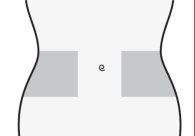
- Вымойте руки. Очистите (не трите) область, в которой будет выполнена инъекция, куском ваты с алкоголем или мылом и водой.
- Сядьте или лягте в удобное положение, чтобы вы были расслаблены. Убедитесь, что вы можете видеть область, в которой будет выполнена инъекция. Лучше всего на диване, кресле-качалке или в кровати с подушками.
Выбор дозы
- Аккуратно снимите колпачок с иглы шприца, потянув за него. Утилизируйте колпачок.
- Перед тем, как ввести себе Клексан, не нажимайте на поршень, чтобы удалить воздух. Это может привести к потере препарата.
- Как только вы снимете колпачок, не трогайте ничего иглой. Таким образом вы обеспечите, что игла останется чистой (стерильной).

- Когда количество препарата в шприце соответствует назначенной дозе, нет необходимости корректировать дозу. Теперь вы готовы к введению инъекции.
- Когда доза зависит от веса тела, вам может потребоваться корректировать дозу в шприце, чтобы она соответствовала назначенной дозе. В этом случае вы можете удалить излишки препарата, держа шприц вниз (чтобы сохранить пузырек воздуха в шприце) и выдавив излишки в контейнер.
- Может появиться капля на конце иглы. Если это происходит, необходимо удалить каплю, осторожно постукивая по шприцу с иглой, направленной вниз. Теперь вы готовы к введению инъекции.
Введение инъекции
- Держите шприц рукой, которой вы пишете (как если бы это был карандаш). Другой рукой осторожно сожмите область, которую вы очистили на животе, между указательным пальцем и большим пальцем, чтобы образовать складку на коже.
- Убедитесь, что вы держите эту складку кожи во время инъекции.
- Держите шприц так, чтобы игла была направлена прямо вниз (вертикально под углом 90 градусов). Введите всю иглу в складку кожи.
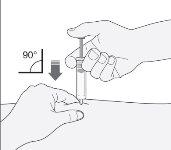
- Нажмите на поршень большим пальцем. Таким образом вы введете препарат в жировую ткань живота. Завершите инъекцию, используя весь препарат в шприце.
- Удалите иглу из места инъекции, потянув ее прямо, и держите палец на поршне. Направьте иглу от себя и других людей, и нажмите сильно на поршень, чтобы активировать систему безопасности. Защитный чехол автоматически покроет иглу. Вы услышите "щелчок", подтверждающий активацию системы безопасности. Теперь вы можете отпустить складку кожи.
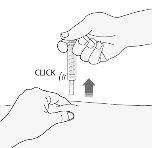
После завершения
- Чтобы избежать появления гематомы, не трите область инъекции после введения.
- Поместите использованный шприц в контейнер для острых предметов. Закройте плотно крышку контейнера и положите контейнер в недоступное для детей место. Когда контейнер будет полным, утилизируйте его так, как указал ваш врач или фармацевт.
Утилизация неиспользованного препарата и всех материалов, которые были в контакте с ним, будет осуществляться в соответствии с местными правилами.
Смена препарата
- Смена Клексана на препараты для снижения свертываемости крови, называемые антагонистами витамина К (например, варфарином)
Ваш врач назначит анализ крови для определения параметра, называемого МНО, и скажет, когда необходимо прекратить лечение Клексаном.
- Смена препаратов для снижения свертываемости крови, называемых антагонистами витамина К (например, варфарином), на Клексан
Прекратите использование антагониста витамина К. Ваш врач назначит анализ крови для определения параметра, называемого МНО, и скажет, когда необходимо начать использовать Клексан.
- Смена Клексана на пероральные прямые антикоагулянты
Прекратите использование Клексана
4. Возможные побочные эффекты
Как и все лекарства, это лекарство может вызывать побочные эффекты, хотя не все люди испытывают их.
Тяжелые побочные эффекты
Прекратите лечение Clexaneи немедленно сообщите об этом вашему врачу или медсестре, если вы испытываете любой признак тяжелой аллергической реакции (такой как сыпь, проблемы с дыханием или глотанием, отек лица, губ, языка, полости рта, горла или глаз).
Прекратите лечение эноксапарином и немедленно сообщите об этом вашему врачу или медсестре, если вы испытываете любой из следующих симптомов:
- общая красная и чешуйчатая сыпь с бугорками под кожей и пузырями, сопровождаемая лихорадкой. Симптомы обычно появляются в начале лечения (острая генерализованная пустулезная эксантема).
Как и другие подобные лекарства для снижения тромбов в крови, Clexane может вызывать кровотечение. Это может поставить под угрозу вашу жизнь. В некоторых случаях кровотечение может быть не очевидным.
Немедленно сообщите об этом вашему врачу, если:
- у вас есть любое кровотечение, которое не останавливается самостоятельно
- у вас есть признаки чрезмерного кровотечения (такие как сильная слабость, усталость, бледность или головокружение с головной болью или необъяснимым отеком).
Ваш врач может решить держать вас под строгим наблюдением или изменить ваше лекарство.
Вы должны немедленно сообщить об этом вашему врачу:
- если у вас есть любой признак блокировки кровеносного сосуда тромбом, такой как:
- боль, похожая на судорогу, покраснение, тепло или отек в одной из ваших ног – это симптомы глубокой венозной тромбозы
- затруднение дыхания, боль в груди, обморок или кашель с кровью – это симптомы легочной эмболии
- если у вас есть болезненная кожная сыпь с красными пятнами под кожей, которые не исчезают при нажатии.
Ваш врач может запросить анализ крови, чтобы проверить количество тромбоцитов.
Другие побочные эффекты:
Очень часто (могут возникать у более 1 из 10 человек):
- кровотечение
- увеличение печеночных ферментов.
Часто(могут возникать у до 1 из 10 человек):
- если появляются синяки чаще, чем обычно - это может быть вызвано проблемой с кровью из-за низкого количества тромбоцитов
- розовые пятна на коже - появляются чаще в области, где вводится Clexane
- кожная сыпь (крапивница, уртикария)
- покраснение и зуд кожи
- синяк или боль в месте инъекции
- уменьшение количества красных кровяных клеток в крови
- увеличение количества тромбоцитов в крови
- головная боль.
Не часто(могут возникать у до 1 из 100 человек):
- внезапная сильная головная боль - это может быть признаком кровоизлияния в мозг
- чувство чувствительности при пальпации и отека живота - может быть признаком желудочного кровоизлияния
- крупные красные поражения кожи, неправильной формы, с или без пузырей
- раздражение кожи (местное раздражение)
- желтуха кожи или глаз, и потемнение цвета мочи - это может быть вызвано проблемой печени.
Редко(могут возникать у до 1 из 1000 человек):
- тяжелая аллергическая реакция - признаки этой реакции могут включать: кожную сыпь, проблемы с глотанием или дыханием, отек губ, лица, горла или языка
- увеличение калия в крови - это более вероятно у людей с проблемами почек или диабетом. Ваш врач может проверить это, сделав анализ крови
- увеличение количества эозинофилов в крови - ваш врач может проверить это, сделав анализ крови
- потеря волос
- остеопороз (болезнь, при которой кости могут ломаться чаще)
- онемение, покалывание и слабость в мышцах (особенно в нижней части тела) после люмбальной пункции или спинальной анестезии
- потеря контроля над мочевым пузырем или кишечником (так что вы не можете контролировать свои потребности)
- уплотнение или узел в месте инъекции.
Сообщение о побочных эффектах
Если вы испытываете любой побочный эффект, проконсультируйтесь с вашим врачом, фармацевтом или медсестрой, даже если это возможные побочные эффекты, которые не указаны в этом листке. Вы также можете сообщить об этом напрямую через Испанскую систему фармаковигиланса для лекарств для человека: https://www.notificaram.es. Сообщая о побочных эффектах, вы можете способствовать предоставлению более полной информации о безопасности этого лекарства.
5. Хранение Clexane
Не храните при температуре выше 25°C. Не замораживайте.
Держите это лекарство вне поля зрения и досягаемости детей.
Не используйте это лекарство после даты истечения срока годности, указанной на упаковке после CAD. Дата истечения срока годности - последний день месяца, указанного.
Не используйте это лекарство, если вы заметили трещину в шприце, частицы во взвешенном растворе или необычный цвет раствора (см. «Внешний вид продукта и содержимое упаковки»).
Лекарства не должны выбрасываться в канализацию или мусор. Отнесите упаковки и лекарства, которые вам больше не нужны, в пункт SIGRE аптеки. Если вы сомневаетесь, спросите у вашего фармацевта, как избавиться от упаковок и лекарств, которые вам больше не нужны. Таким образом, вы поможете защитить окружающую среду.
6. Содержимое упаковки и дополнительная информация
Состав Clexane
- Активное вещество - эноксапарин натрия
- Каждый мл содержит 100 мг эноксапарина натрия, что эквивалентно 10 000 МЕ анти-Xa активности
Каждый предварительно заполненный шприц с 0,8 мл содержит 8 000 МЕ (80 мг) эноксапарина натрия
- Другой компонент - вода для инъекционных препаратов
Внешний вид продукта и содержимое упаковки
Clexane - это прозрачный, бесцветный или слегка желтоватый инъекционный раствор в предварительно заполненном шприце из стекла (с или без автоматического устройства безопасности).
Он выпускается в упаковках по 2, 5, 6, 10, 12, 20, 24, 30, 50, 100 предварительно заполненных шприцев, и в упаковках по 3 x 10, 9 x 10, 100 x 10 и 200 x 10 предварительно заполненных шприцев.
Возможно, не все размеры упаковок будут продаваться.
Владелец разрешения на маркетинг
sanofi-aventis, S.A.
C/ Roselló i Porcel, 21
08016 Барселона
Испания
Производитель
Sanofi Winthrop Industrie
Boulevard Industriel
76580 Le Trait,
Франция
Или
Sanofi Winthrop Industrie
180 rue Jean Jaurès
94700 Maisons-Alfort
Франция
Или
Chinoin Pharmaceutical and Chemical Works Private Co. Ltd
Csanyikvölgy site
Miskolc, Csanyikvölgy
H-3510
Венгрия
Или
Sanofi-Aventis GmbH
Turm A, 29. OG, Wienerbergstraße 11
1100 Вена
Австрия
Или
Sanofi-Aventis Private Co. Ltd
Budapest Logistics and Distribution Platform
Bdg. DC5, Campona utca1.
Budapest, 1225
Венгрия
Или
Sanofi-Aventis Deutschland GmbH
Industriepark Höchst-Brüningstraße 50
65926 Франкфурт-на-Майне
Германия
Это лекарство разрешено к маркетингу в государствах-членах Европейского экономического пространства под следующими названиями:
Австрия, Франция, Португалия: Lovenox.
Бельгия, Болгария, Хорватия, Кипр, Чехия, Эстония, Германия, Греция, Венгрия, Ирландия, Италия, Латвия, Люксембург, Мальта, Польша, Румыния, Словакия, Словения, Испания, Великобритания: Clexane.
Италия: Clexane T.
Финляндия, Исландия, Норвегия, Швеция: Klexane.
Дата последнего пересмотра этого листка:февраль 2022
Другие источники информации
Подробная информация о этом лекарстве доступна на сайте Испанского агентства по лекарствам и медицинским продуктам (AEMPS) http://www.aemps.gob.es/

Сколько стоит КЛЕКСАН 8 000 МЕ (80 мг)/0,8 мл РАСТВОР ДЛЯ ИНЪЕКЦИЙ В ПРЕДНАПОЛНЕННОМ ШПРИЦЕ в Испании в 2025 году?
Средняя цена на КЛЕКСАН 8 000 МЕ (80 мг)/0,8 мл РАСТВОР ДЛЯ ИНЪЕКЦИЙ В ПРЕДНАПОЛНЕННОМ ШПРИЦЕ в ноябрь, 2025 года составляет около 57.35 евро. Финальная стоимость может зависеть от региона, конкретной аптеки и рецептурного статуса. Для точной информации лучше проверить онлайн или в ближайшей аптеке.
- Страна регистрации
- Средняя цена в аптеках57.35 EUR
- Активное вещество
- Требуется рецептДа
- Производитель
- Информация носит справочный характер и не является медицинской рекомендацией. Перед приемом любых препаратов проконсультируйтесь с врачом. Oladoctor не несет ответственности за медицинские решения, принятые на основе этого контента.
- Аналоги КЛЕКСАН 8 000 МЕ (80 мг)/0,8 мл РАСТВОР ДЛЯ ИНЪЕКЦИЙ В ПРЕДНАПОЛНЕННОМ ШПРИЦЕФорма выпуска: ИНЪЕКЦИОННЫЙ РАСТВОР, 100 мг (10000 МЕ) эноксапарина натрия/млАктивное вещество: enoxaparinПроизводитель: Sanofi Aventis S.A.Требуется рецептФорма выпуска: ИНЪЕКЦИОННЫЙ РАСТВОР, 120 мг (12000 МЕ) /0,8 млАктивное вещество: enoxaparinПроизводитель: Sanofi Aventis S.A.Требуется рецептФорма выпуска: ИНЪЕКЦИОННЫЙ РАСТВОР, 150 мг (15000 МЕ) /1 млАктивное вещество: enoxaparinПроизводитель: Sanofi Aventis S.A.Требуется рецепт
Аналоги КЛЕКСАН 8 000 МЕ (80 мг)/0,8 мл РАСТВОР ДЛЯ ИНЪЕКЦИЙ В ПРЕДНАПОЛНЕННОМ ШПРИЦЕ в других странах
Лучшие аналоги с тем же действующим веществом и терапевтическим эффектом.
Аналог КЛЕКСАН 8 000 МЕ (80 мг)/0,8 мл РАСТВОР ДЛЯ ИНЪЕКЦИЙ В ПРЕДНАПОЛНЕННОМ ШПРИЦЕ в Польша
Аналог КЛЕКСАН 8 000 МЕ (80 мг)/0,8 мл РАСТВОР ДЛЯ ИНЪЕКЦИЙ В ПРЕДНАПОЛНЕННОМ ШПРИЦЕ в Украина
Врачи онлайн по КЛЕКСАН 8 000 МЕ (80 мг)/0,8 мл РАСТВОР ДЛЯ ИНЪЕКЦИЙ В ПРЕДНАПОЛНЕННОМ ШПРИЦЕ
Консультация по дозировке, побочным эффектам, взаимодействиям, противопоказаниям и продлению рецепта на КЛЕКСАН 8 000 МЕ (80 мг)/0,8 мл РАСТВОР ДЛЯ ИНЪЕКЦИЙ В ПРЕДНАПОЛНЕННОМ ШПРИЦЕ – по решению врача и с учетом местных правил.














